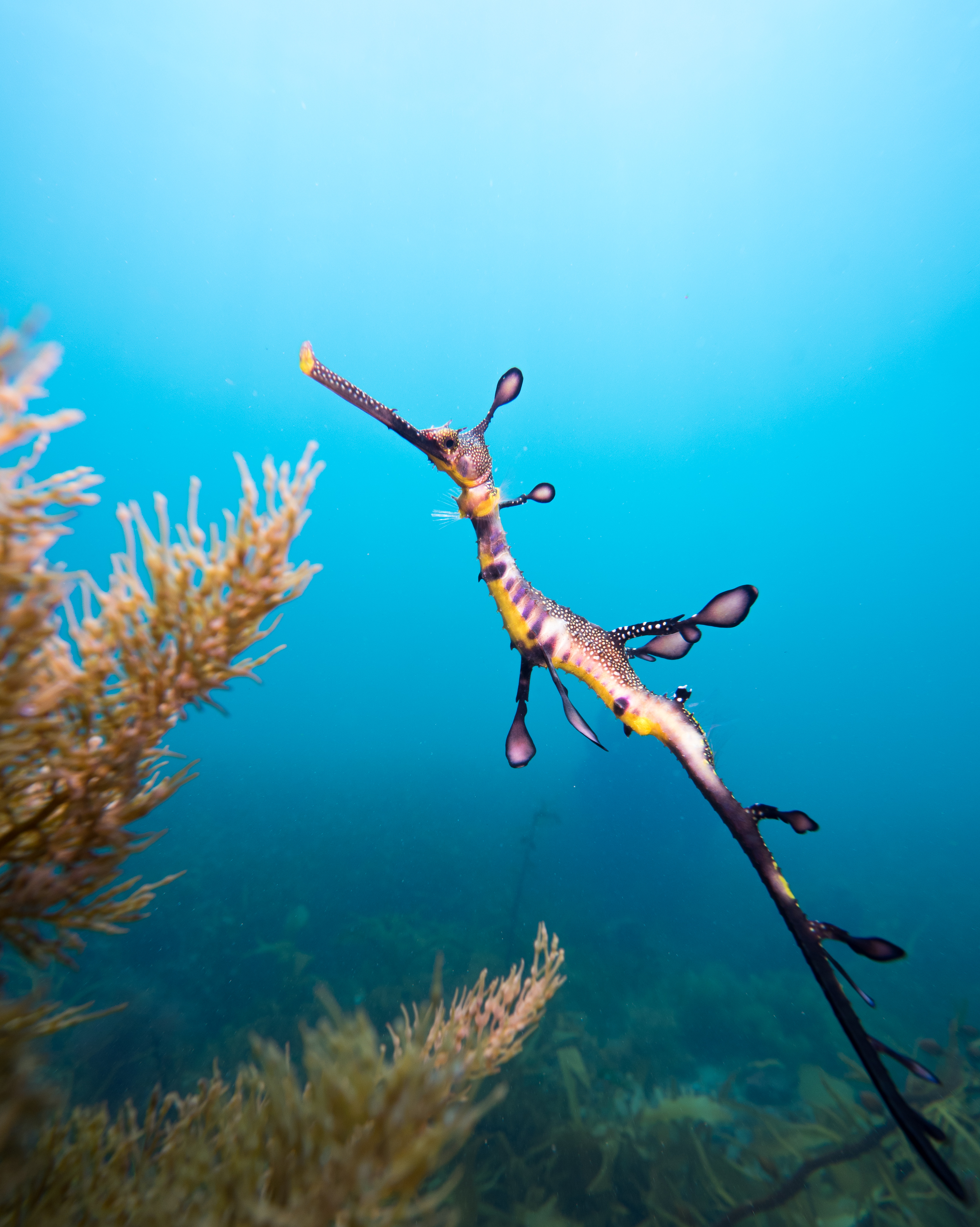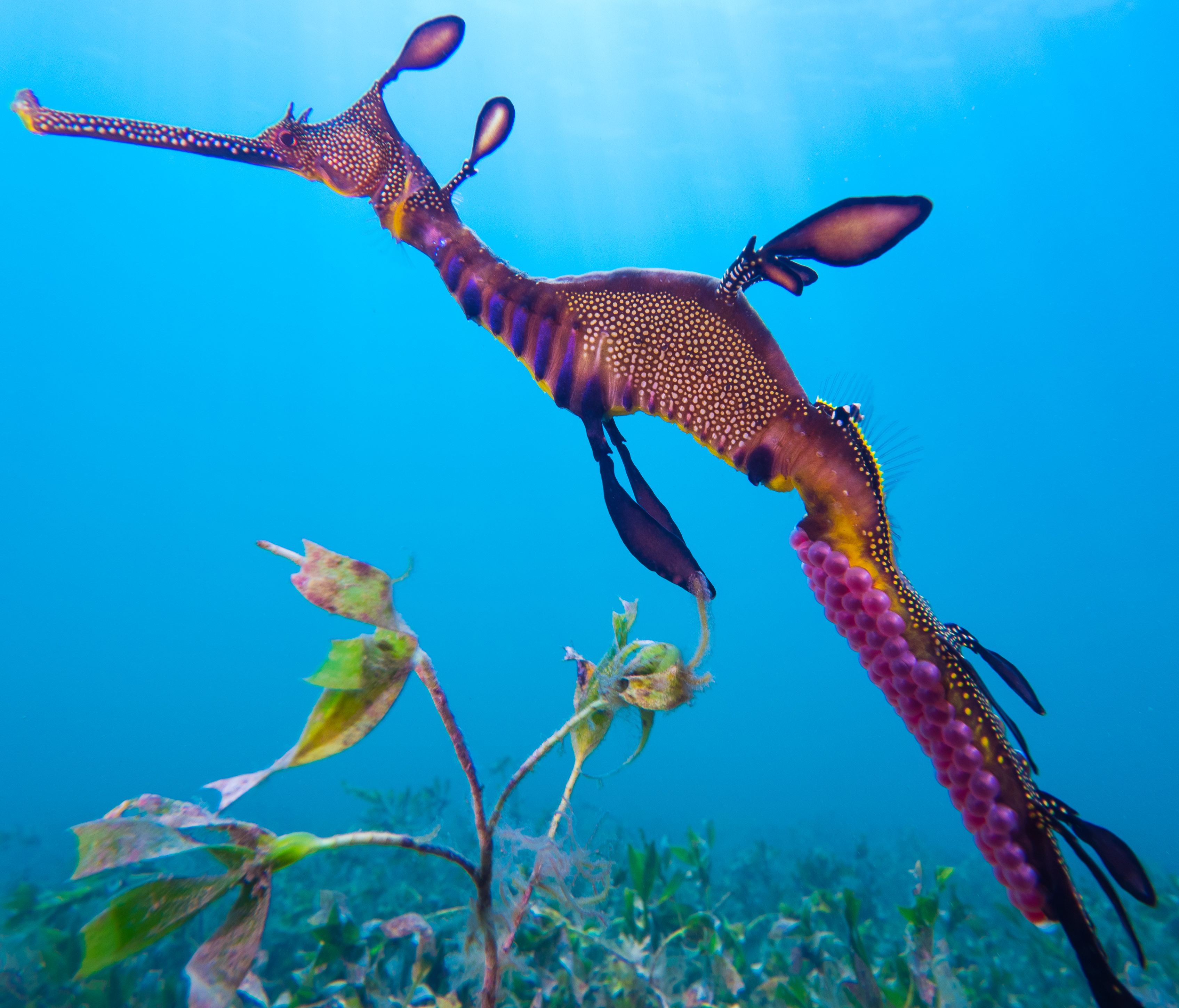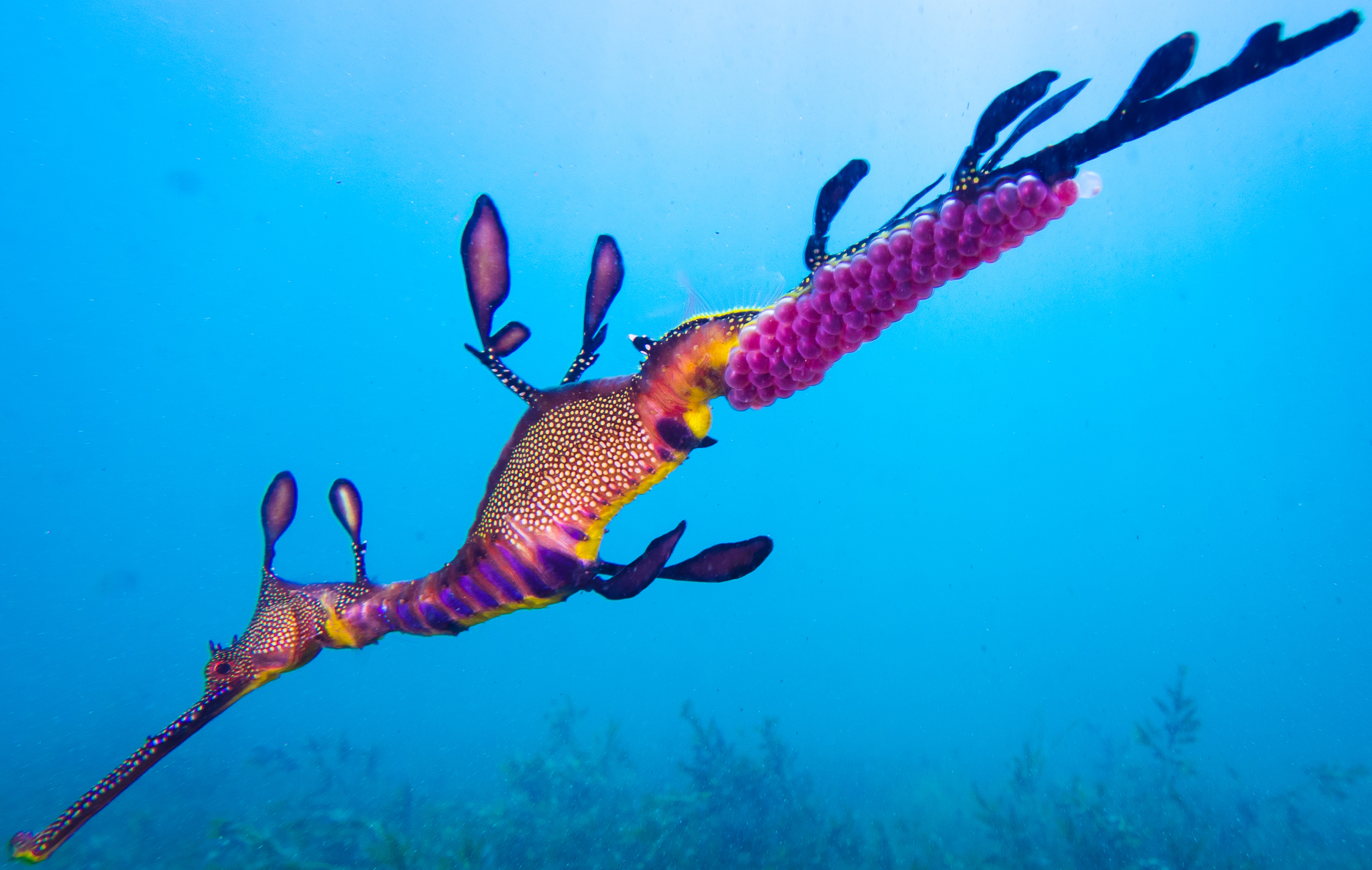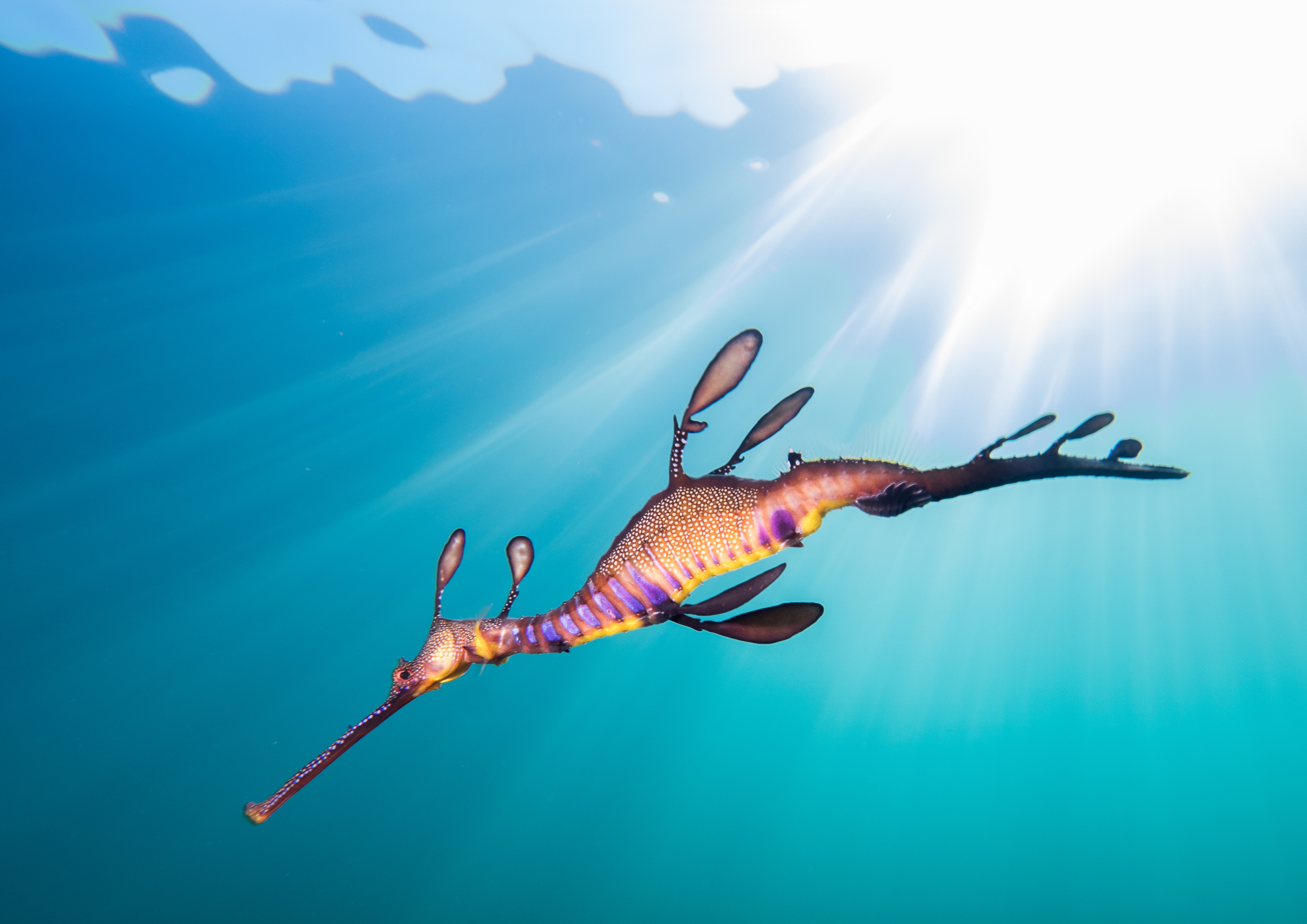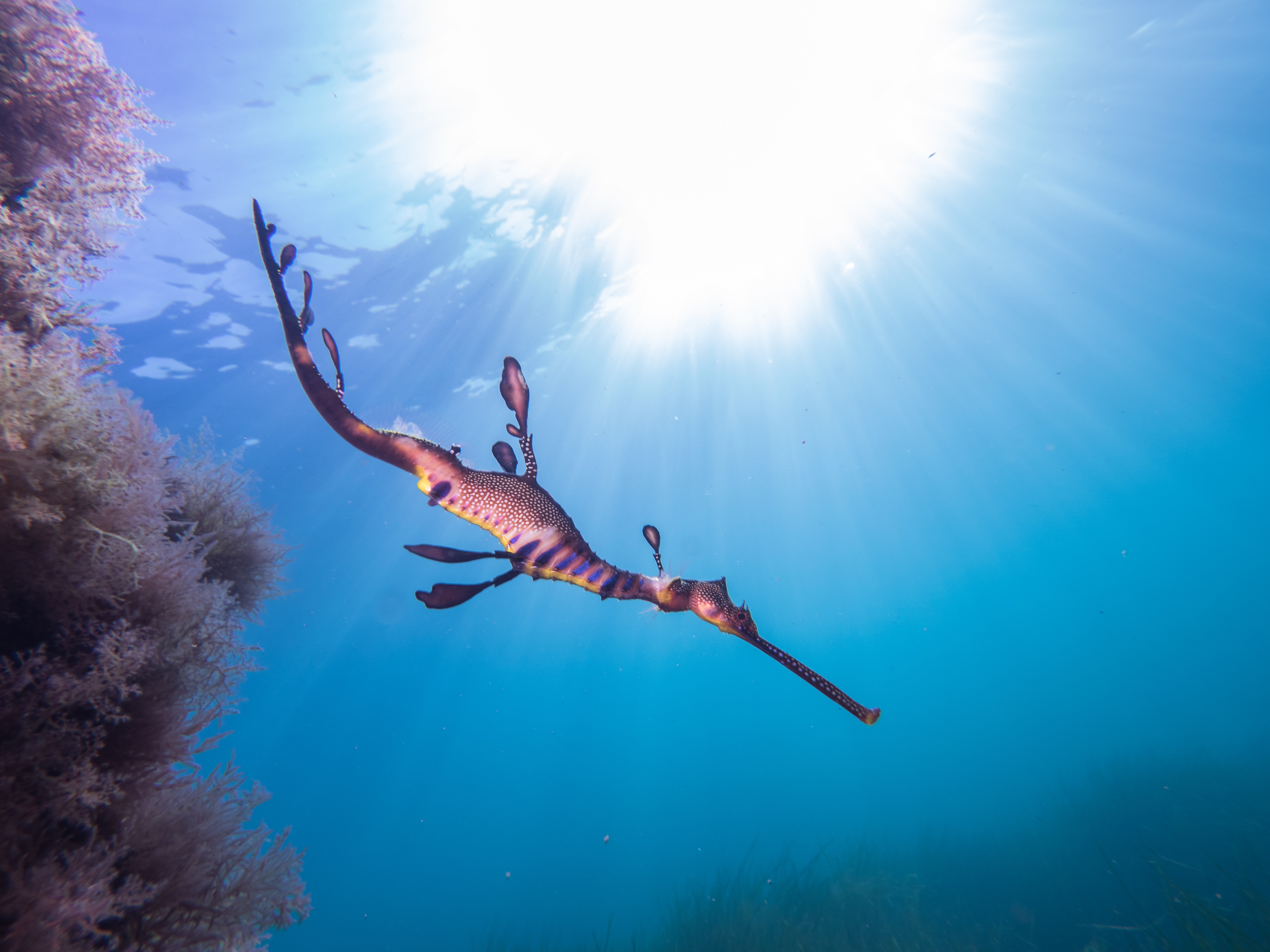The distinctive looking weedy seadragon, also called the common seadragon, lives exclusively off the coast of southeastern Australia. Closely related to leafy seadragons, these tiny creatures are quite a sight underwater. As their names suggest, they resemble dragons, with their long snouts and wing-like appendages. But what exactly is a weedy seadragon, and how can a diver see one?
What is a weedy seadragon?
Weedy seadragons are related to seahorses. They have long, slender mouths, which they use to feed on tiny crustaceans or zooplankton. Instead of fins, their bodies have multiple appendages that resemble seaweed, which help camouflage the animals among large beds of seagrass and kelp. Very few predators can see them and, with a lifespan of up to six years, divers may spot the same fascinating individual multiple times at one dive site. With a maximum size of over 17 inches (45 cm), they often surprise divers with their large size. They have two relatives more closely related than the seahorse, the leafy seadragon (as mentioned above) and the ruby seadragon. The weedy seadragon, however, is by far the most common and has the largest habitat range.
Where do they live?
Weedy seadragons live among beds of seagrass and kelp, anywhere from over 100 feet deep (30 m) to just a few feet of water. Because of their heavy camouflage, divers who haven’t already discovered them will have a hard time spotting them. If you really want to see a weedy seadragon, take a local dive guide.
To find a weedy seadragon, you will need to dive on either the southeastern or southern coast of Australia. Luckily, these natives inhabit the waters directly off Sydney in Botany Bay. Alternately, you can find them an hour’s drive from Melbourne just off the Mornington Peninsula. Each is an easy dive, done through a local dive shop and requiring only an open-water certification. In Melbourne, you may also snorkel with weedy seadragons if you can brave the cold waters.
Why are they amazing?
Not only are they a fascinating animal that looks like a mythical creature, but weedy seadragons also exhibit some unusual behaviors and biological traits. Just as with humans, each seadragon is unique. Scientists can identify individuals by recording the patterns on their torsos, composed of dozens of bright spots. No two seadragons have the same pattern, much the same as human fingerprints. Seadragons’ reproductive behavior is unique as well and can be a spectacular sight. Once the female has ensured that the male has fertilized the eggs, she deposits them on his tail. Here they will stay for up to a month before they hatch. The bright purple eggs offer great contrast against the golden yellow of a seadragon’s body and make for fantastic photos.


